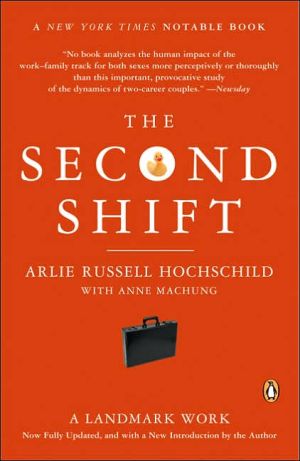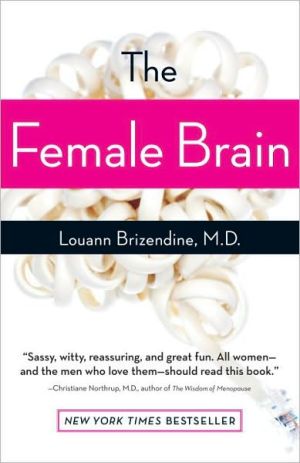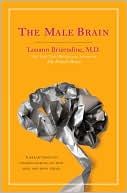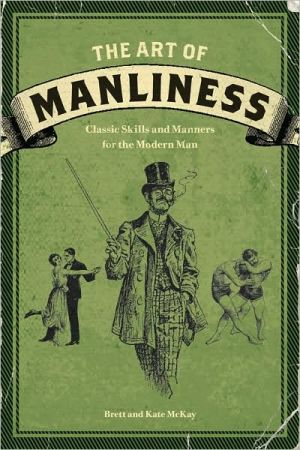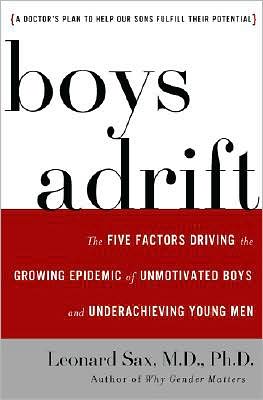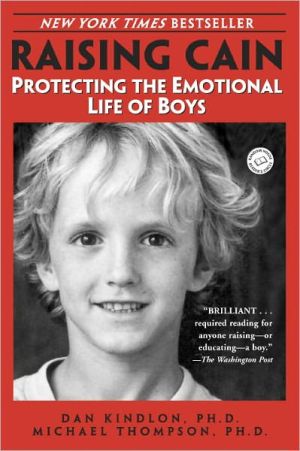The Second Shift
Fifteen years after its first publication, The Second Shift remains just as important and relevant today as it did then. As the majority of women entered the workforce, sociologist and Berkeley professor Arlie Hochschild was one of the first to talk about what really happens in dual-career households. Many people were amazed to find that women still did the majority of childcare and housework even though they also worked outside the home. Now, in this updated edition with a new introduction...
Search in google:
Fifteen years after its first publication, The Second Shift remains just as important and relevant today as it did then. As the majority of women entered the workforce, sociologist and Berkeley professor Arlie Hochschild was one of the first to talk about what really happens in dual-career households. Many people were amazed to find that women still did the majority of childcare and housework even though they also worked outside the home. Now, in this updated edition with a new introduction from the author, we discover how much things have, or have not, changed for women today. New York Times Book Review The best discussion I have read on what must be the quintessential domestic bind of our time.
Chapter One\ A Speed-up in the Family\ She is not the same woman in each magazine advertisement, but she is the same idea. She has that working-mother look as she strides forward, briefcase in one hand, smiling child in the other. Literally and figuratively, she is moving ahead. Her hair, if long, tosses behind her; if it is short, it sweeps back at the sides, suggesting mobility and progress. There is nothing shy or passive about her. She is confident, active, "liberated." She wears a dark tailored suit, but with a silk bow or colorful frill that says,"I'm really feminine underneath." She has made it in a man's world without sacrificing her femininity. And she has done this on her own. By some personal miracle, this image suggests, she has managed to combine what 150 years of industrialization have split wide apart--child and job, frill and suit, female culture and male.\ When I showed a photograph of a supermom like this to the working mothers I talked to in the course of researching this book, many responded with an outright laugh. One daycare worker and mother of two, ages three and five, threw back her head: "Ha! They've got to be kidding about her. Look at me, hair a mess, nails jagged, twenty pounds overweight. Mornings, I'm getting my kids dressed, the dog fed, the lunches made, the shopping list done. That lady's got a maid." Even working mothers who did have maids couldn't imagine combining work and family in such a carefree way."Do you know what a baby does to your life, the two o'clock feedings, the four o'clock feedings?" Another mother of two said: "They don't show it, but she's whistling"--sheimitated a whistling woman, eyes to the sky--"so she can't hear the din." They envied the apparent ease of the woman with the flying hair, but she didn't remind them of anyone they knew.\ The women I interviewed-lawyers, corporate executives, word processors, garment pattern cutters, daycare workers--and most of their husbands, too-felt differently about some issues: how right it is for a mother of young children to work a full-time job, or how much a husband should be responsible for the home. But they all agreed that it was hard to work two full-time jobs and raise young children.\ How well do couples do it? The more women work outside the home, the more central this question. The number of women in paid work has risen steadily since before the turn of the century, but since 1950 the rise has been staggering. In 1950, 30 percent of American women were in the labor force; in 1986, it was 55 percent. In 1950, 28 percent of married women with children between six and seventeen worked outside the home; in 1986, it had risen to 68 percent. In 1950, 23 percent of married women with children under six worked. By 1986, it had grown to 54 percent. We don't know how many women with children under the age of one worked outside the home in 1950; it was so rare that the Bureau of Labor kept no statistics on it. Today half of such women do. Two-thirds of all mothers are now in the labor force; in fact, more mothers have paid jobs (or are actively looking for one) than nonmothers. Because of this change in women, two-job families now make up 58 percent of all married couples with children.'\ Since an increasing number of working women have small children, we might expect an increase in part-time work. But actually, 67 percent of the mothers who work have full-time jobs-that is, thirty-five hours or more weekly. That proportion is what it was in 1959.\ If more mothers of young children are stepping into full-time jobs outside the home, and if most couples can't afford household help, how much more are fathers doing at home? As I began ex-ploring this question I found many studies on the hours working men and women devote to housework and childcare. One national random sample of 1,243 working parents in forty-four American cities, conducted in 1965-66 by Alexander Szalai and his coworkers, for example, found that working women averaged three hours a day on housework while men averaged 17 minutes; women spent fifty minutes a day of time exclusively with their children; men spent twelve minutes. On the other side of the coin, working fathers watched television an hour longer than their working wives, and slept a half hour longer each night. A comparison of this American sample with eleven other industrial countries in Eastern and Western Europe revealed the same difference between working women and working men in those countries as well .z In a 1983 study of white middle-class families in greater Boston, Grace Baruch and R. C. Barnett found that working men married to working women spent only three-quarters of an hour longer.each week with their kindergarten-aged children than did men married to housewives.\ \ \ \ Szalai's landmark study documented the now familiar but still alarming story of the working woman's "double day," but it left me wondering how men and women actually felt about all this. He and his coworkers studied how people used time, but not, say, how a father felt about his twelve minutes with his child, or how his wife felt about it. Szalai's study revealed the visible surface of what I discovered to be a set of deeply emotional issues: What should a man and woman contribute to the family? How appreciated does each feel? How does each respond to subtle changes in the balance of marital power? How does each develop an unconscious "gender strategy" for coping with the work at home, with marriage, and, indeed, with life itself These were the underlying issues.\ \
PrefaceAcknowledgmentsIntroductionCh. 1A Speed-up in the Family1Ch. 2Marriage in the Stalled Revolution11Ch. 3The Cultural Cover-up23Ch. 4Joey's Problem: Nancy and Evan Holt35Ch. 5The Family Myth of the Traditional: Frank and Carmen Delacorte62Ch. 6A Notion of Manhood and Giving Thanks: Peter and Nina Tanagawa79Ch. 7Having It All and Giving It Up: Ann and Robert Myerson100Ch. 8A Scarcity of Gratitude: Seth and Jessica Stein116Ch. 9An Unsteady Marriage and a Job She Loves Anita and Ray Judson135Ch. 10The "His" and "Hers" of Sharing: Greg and Carol Alston149Ch. 11No Time Together: Barbara and John Livingston167Ch. 12Sharing Showdown and Natural Drift: Pathways to the New Man181Ch. 13Beneath the Cover-up: Strategies and Strains196Ch. 14Tensions in Marriage in an Age of Divorce213Ch. 15Men Who Do and Men Who Don't226Ch. 16The Working Wife As Urbanizing Peasant250Ch. 17Stepping into Old Biographies or Making History Happen?269App.: Research on Who Does the Housework and Child Care285Notes293Selected Reading303Index345
\ Betty FriedmanA brillian, urgently needed analysis of the new problems hidden behind the breezy image of the working woman who 'has it all.'\ \ \ \ \ New York Times Book ReviewThe best discussion I have read on what must be the quintessential domestic bind of our time.\ \ \ NewsdayNo book analyzes the human impact of the work-family track for both sexes more perceptively or thoroughly than this important, provacative study of the dynamics of two-career couples.\ \ \ \ \ NewsweekBrings the dilemma of the working mother to life as never before.\ \ \ \ \ ParentingA fascinating read that makes us think twice about how much the Women's Movement still has to accomplish.\ \ \ \ \ Seattle Post IntelligencerThe Second Shift is like a scream in the dark. It aches with truths. It cries out for change.\ \
